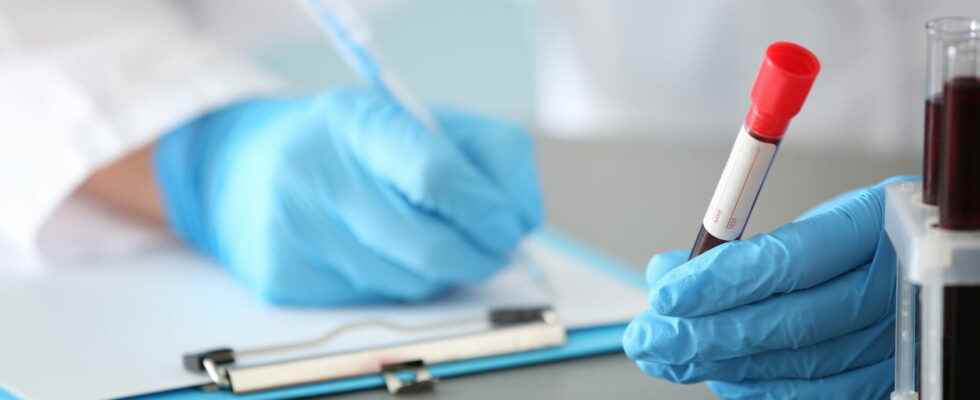The mean corpuscular hemoglobin content (TCMH or CCMH) represents the amount of hemoglobin contained in a red blood cell. Its rate is analyzed in case of suspicion of anemia. What is its normal value? What does a high rate mean? Weak ? Who and when to consult?
The Mean corpuscular hemoglobin content (abbreviated TCMH) or the mean corpuscular hemoglobin concentration (abbreviated MCHC) is usually dosed as part of a comprehensive blood workup when a patient complains of symptoms suggestive of anemia. What does the exam consist of? How to interpret its analysis results? What does a rate of High MCHC? Weak ? What is the treatement ? Guide.
Measurement of mean corpuscular hemoglobin (MCHC) represents the amount of hemoglobin contained in a red blood cellthe molecule that transports oxygen to the organs. This measurement is often compared to mean corpuscular hemoglobin concentration (MCHC), which is more accurate.
The TCMH is calculated by dividing the concentration of hemoglobin in the blood by the number of red blood cells.
| TCMH = MCHC x number of red blood cells |
The reference values are indicated in the table below.
| Normal value of a complete blood count | |
|---|---|
| TCMH | Between 28 and 32 pg/red blood cell |
| MCHC | Between 30 and 37 g/dL |
TCMH is often measured at the same time as MCHC. These measures are used when it is suspected anemia in a patient with certain symptoms such as:
- signs of weakness,
- unexplained fatigue,
- headaches,
- pallor of the face,
- shortness of breath on exertion,
- diarrhea,
- dizziness,
- palpitations,
- loss of weight or appetite,
- infection or inflammation.
Remember that anemia corresponds to a decrease in the amount of hemoglobin in the blood. Anyone experiencing these symptoms is advised to see their doctor. These two values (TCMH and CCMH) have no diagnostic value; on the other hand, they make it possible to guide the doctor’s diagnosis.
The TCMH/CCMH assay consists of collecting blood via a blood test. This sample will be used to draw up the complete blood count (NFS), which is the analysis of blood cells. The results will be sent to the laboratory for analysis.
► High TCMH/CCMH: what does that mean?
A blood count showing a abnormally high level of TCMH/CCMH (a TCMH usually greater than 32 pg/100 ml) can make one think of a macrocytic anemiawhich means the patient has larger than normal red blood cells and therefore a higher amount of hemoglobin in a red blood cell. The doctor will then have to carry out additional analyzes to determine its origin. This may be due to a vitamin B12 or B9 deficiency (folic acid). It can also be a hyperchromic anemia, that is, when the patient absorbs too much iron. Typically, the patient has an MCHC greater than 36 pg/100 mL. More rarely, it may be a liver disease, hereditary spherocytosis (rare) or one of the consequences of severe burns.
► Low TCMH/CCMH: what does that mean?
On the other hand, when the complete blood count shows an abnormally low rate of TCMH/CCMH (a TCMH generally less than 28 pg/100 ml, but this may vary depending on the laboratory), it is possible that the patient suffers fromhypochromic anemiathat is, it has less hemoglobin in his blood than normal. Most often this is due to a iron deficiency in the body. But in some cases, this can be indicative of an inflammatory pathology such as rheumatic or infectious diseases or certain cancers. Complementary examinations (C-reactive protein assay, serum iron assay…) will have to be carried out in order to shed light on the cause of the anemia.
In the case of hypochromic anemia with iron deficiency, one can consider a iron supplementation, under medical advice. Hygieno-dietetic rules can be put in place as the fact ofhave a healthy, varied and iron-rich diet. The livers of meats and poultry, sardines and shellfish, legumes, green vegetables and nuts are excellent sources of iron. In the case of macrocytic anemia, oral supplementation of vitamins B12 or B9 and a more suitable diet may be recommended.
Source : Institute of Clinical Biology from the University of Brussels.
